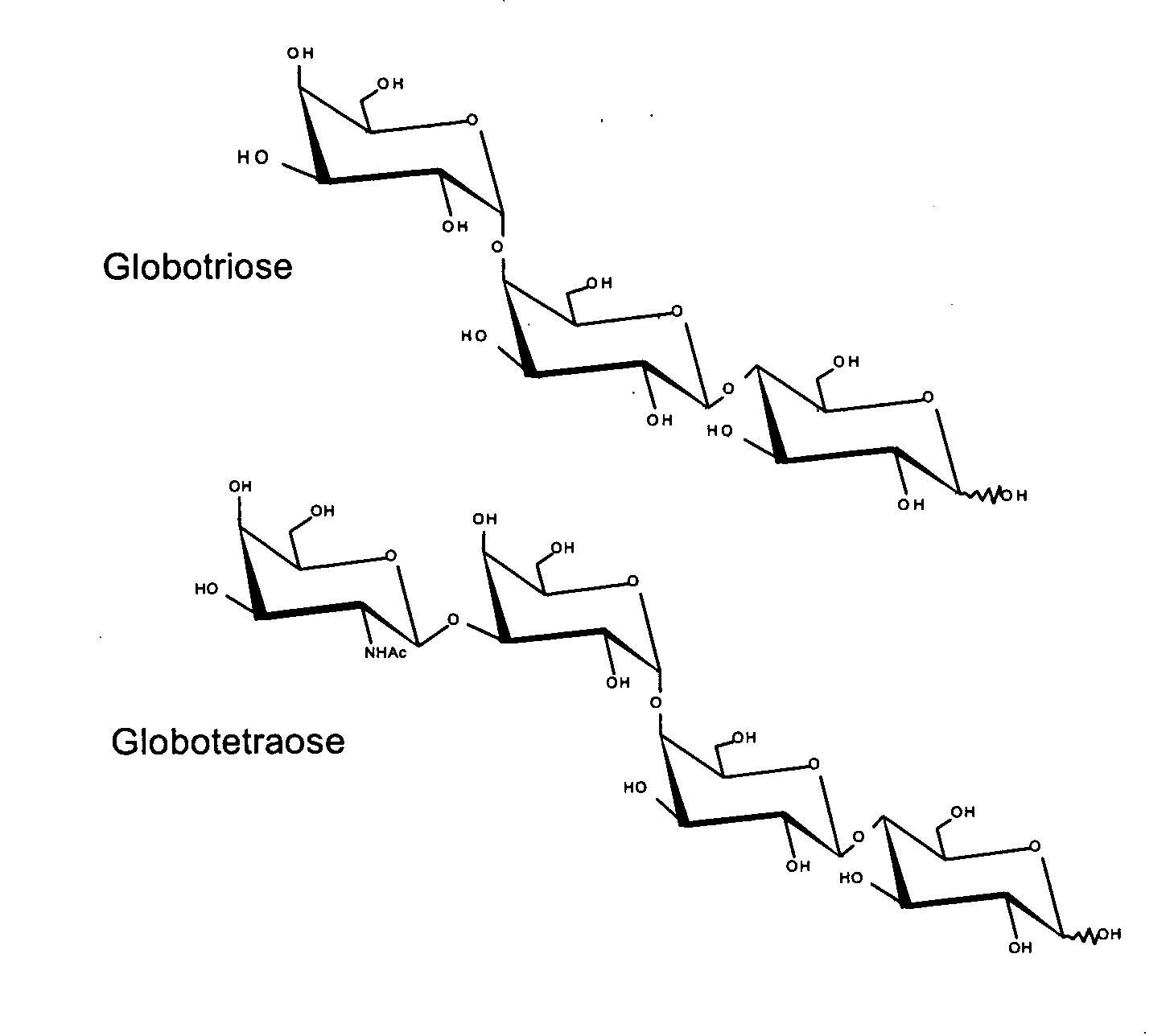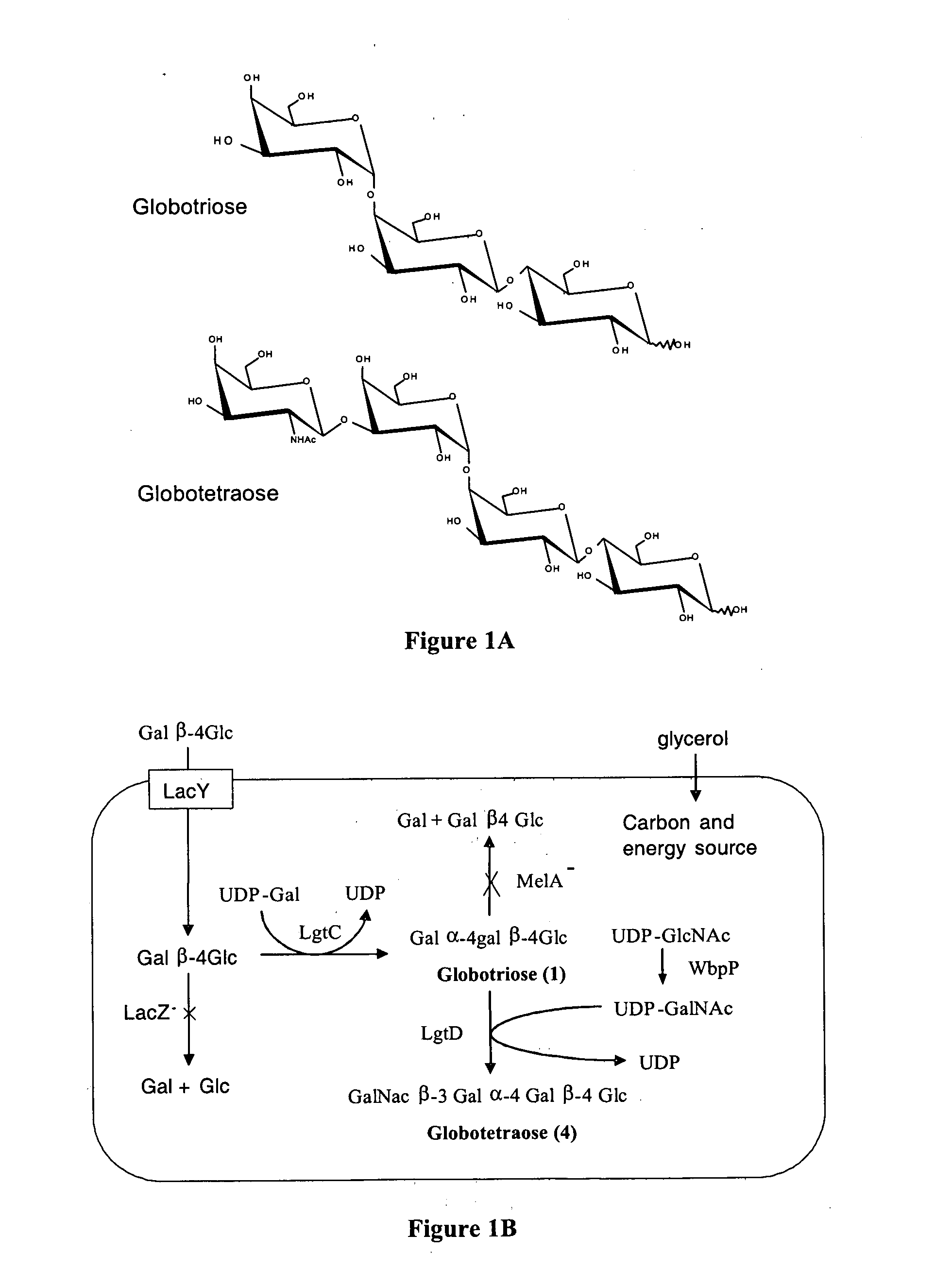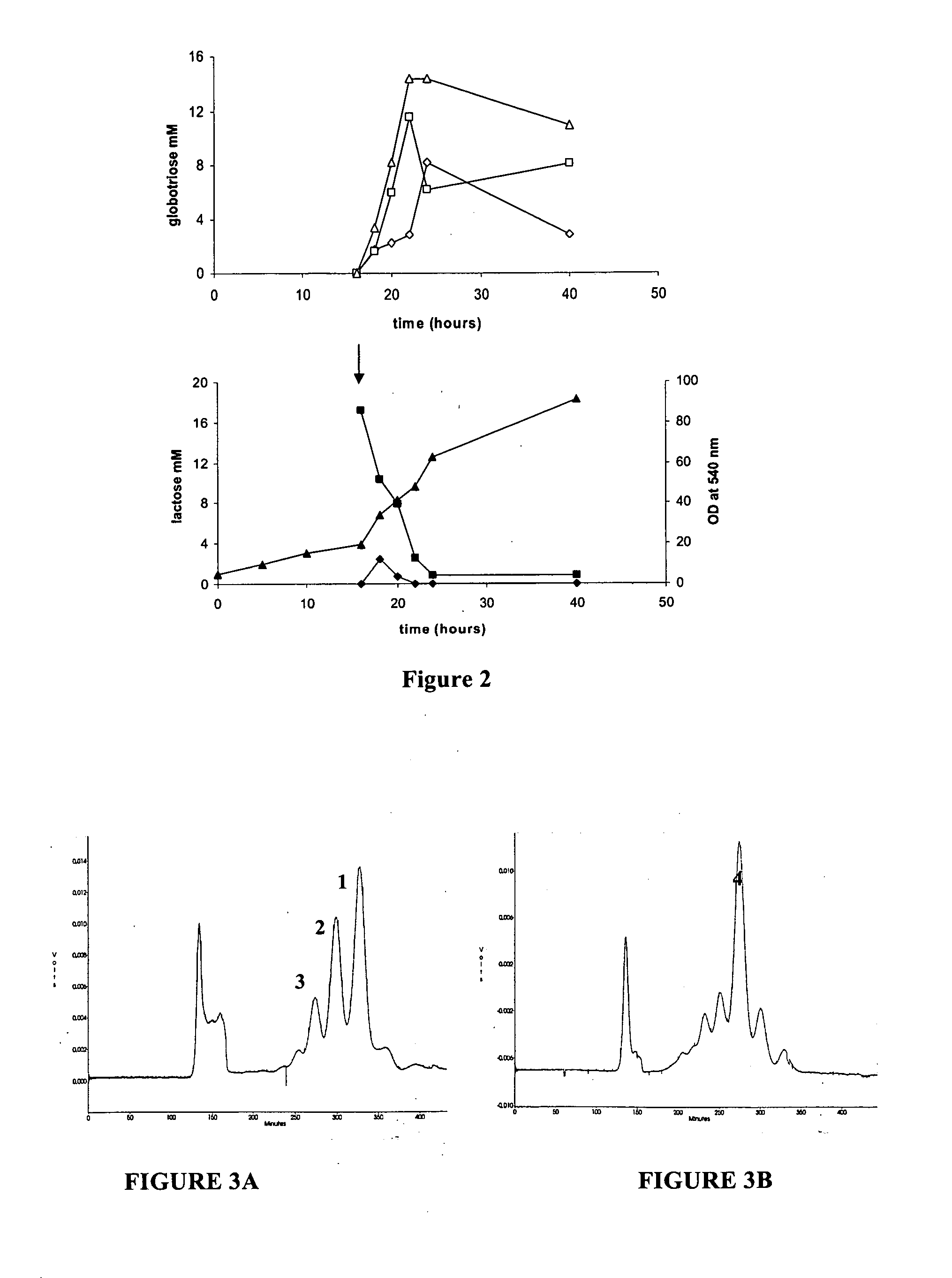Production of globosides oligosaccharides using metabolically engineered microorganisms
a technology of metabolically engineered microorganisms and globosides, which is applied in the field of large-scale in vivo synthesis of globosides oligosaccharides, can solve the problems of difficult chemical synthesis of oligosaccharides, unable to obtain regiospecific couplings, and oligosaccharides have become a major challenge of carbohydrate chemistry
- Summary
- Abstract
- Description
- Claims
- Application Information
AI Technical Summary
Benefits of technology
Problems solved by technology
Method used
Image
Examples
example 1
Production of Globotriose
[0097] A strategy for producing globotriose (1) from exogenous lactose is described in FIG. 1. The host strain was an E. coli K12 strain JM107 derivative in which the melA gene for α-galactosidase activity (melibiase) had been inactivated [21]. The lgtC gene, encoding the α-1,4-galactosyltransferase, was amplified from the Neisseiria meningitidis L1 (126E) genome and cloned into a pBluescript plasmid. Sequencing revealed a frameshift in lgtC due to the deletion of a G in the polyG localised between the 157 bp and 170 bp positions. The reading frame was restored by site directed mutagenesis and the resulting plasmid (pBluescript-lgtC) was introduced in JM107melA− to obtain the globotriose-producing strain TA19. Strain TA19 was cultured to high cell density with glycerol as the carbon and energy source (FIG. 2).
[0098] Lactose (14.6 mM) was added at the beginning of the fed-batch phase at the same time as the inducer IPTG. The production of globotriose (1) wa...
example 2
Production of Globotetraose from Lactose
[0101] The system for globotriose production could be extended to the production of globotetraose by additionally expressing the lgtD and wbpP genes (FIG. 1). The lgtD gene encoding the β 1-3 N-acetylgalactosaminyltransferase activity was amplified from the Haemophilus influenza strain Rd DNA and was cloned upstream of lgtC in pBluescript-lgtC resulting in pBluescript-lgtDC. The globotetraose-producing strain TA11 was constructed by co-transforming the JM107melA− strain with pBluescript-lgtDC and pBBR-wbpP which is a pBBR1-MCS2 derivative carrying the Pseudomonas aeruginosa wbpP gene for UDP-GlcNAc C4 epimerase [22].
[0102] The TA11 strain was cultured to a high cell density under the same conditions as for the production of globotriose by the TA19 strain. Globotetraose (4) production was monitored by determining the acid hydrolysable hexosamine concentration which increased linearly after the addition of lactose. After 40 hours of culture th...
example 3
Production of Globotetraose from Globotriose
[0105] The observation that extracellular globotriose was taken up by the cells after the complete exhaustion of lactose during the culture of the TA19 strain led us to investigate the possibility of using globotriose (1) as an exogenous acceptor for globotetraose synthesis as illustrated in FIG. 4.
[0106] The globotetraose-producing strain TA21 was constructed by co-transforming the JM107melA strain with pBBR-wbpP and pACT3-lgtD. The TA21 strain was cultured at high cell density and globotriose (1) (1.27 mM) was added instead of lactose as the acceptor. Analysis of oligosaccharide content in the intracellular and the extracellular fraction by thin layer chromatography indicated that globotriose (1) was rapidly internalized and entirely converted into globotetraose (4) within 6 hours of culture (FIG. 5).
[0107] Its final yield was estimated to be 1.25 mM by colorimetric quantification of acid-hydrolysable hexosamine. Since it was the only...
PUM
| Property | Measurement | Unit |
|---|---|---|
| Percent by mass | aaaaa | aaaaa |
| Concentration | aaaaa | aaaaa |
| Fraction | aaaaa | aaaaa |
Abstract
Description
Claims
Application Information
 Login to View More
Login to View More - R&D
- Intellectual Property
- Life Sciences
- Materials
- Tech Scout
- Unparalleled Data Quality
- Higher Quality Content
- 60% Fewer Hallucinations
Browse by: Latest US Patents, China's latest patents, Technical Efficacy Thesaurus, Application Domain, Technology Topic, Popular Technical Reports.
© 2025 PatSnap. All rights reserved.Legal|Privacy policy|Modern Slavery Act Transparency Statement|Sitemap|About US| Contact US: help@patsnap.com



